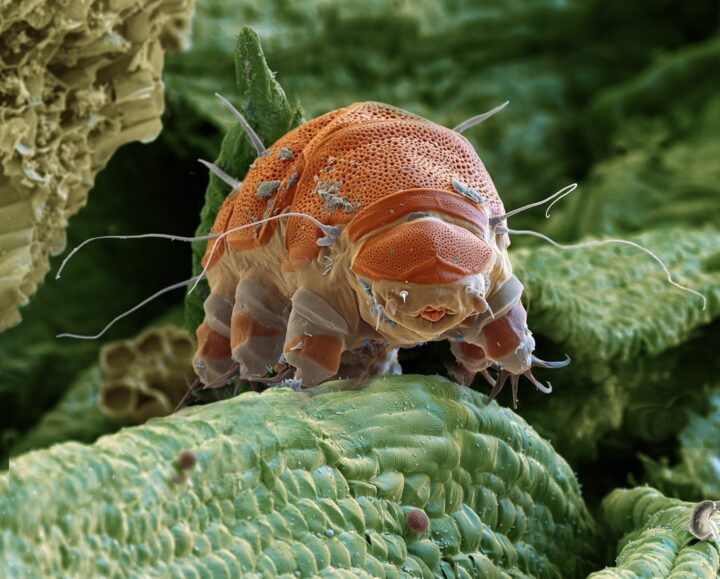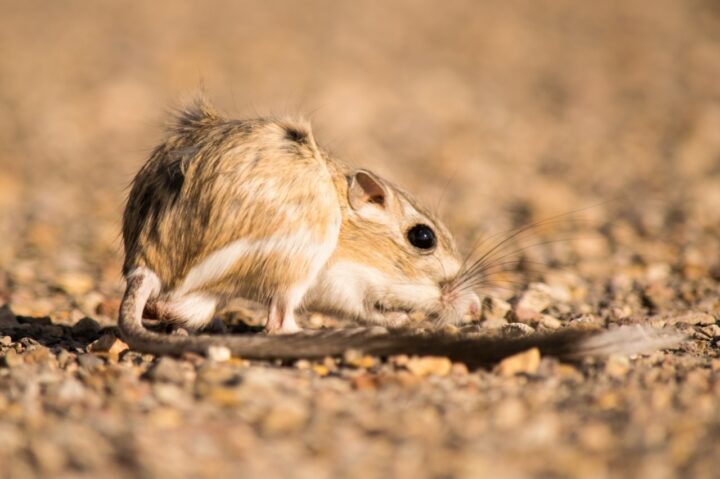Sense Chemicals (Odor, Taste, etc.) From the Environment
Chemicals are important for signaling and communication among living systems, either intentionally (such as when two living systems try to find one another) or unintentionally (such as when a plant emits a chemical signal that an herbivore can use to find a tasty bite). They are also important for other uses, such as navigating or finding sources for minerals. But chemical signals are often relatively weak and disperse when moving through water or gases. Therefore, detecting them requires specialized abilities, including a way to determine where they are coming from. A well known example of sensing chemicals can be seen in ants following a pheromone trail laid down by others in their colony to locate a quality and abundant food source.
Modify Light/Color
Color in living systems comes from pigments and the interaction of light with surfaces. Color serves many purposes for living systems, such as attracting prey or mates, providing warnings, or protecting through camouflage. To create the effects needed for each purpose, living systems must control the expression or visibility of pigments and the interactions (such as reflectance and refraction) of light. To do so, they have strategies that modify color or light to increase or decrease the color’s position, intensity, opacity, and more. Male hummingbirds, for example, have brightly colored feather patches on their throats; the coloring comes from pigments, structures that refract light, or a combination of the two. When a male hummingbird hovers near a potential mate, it modifies the angle of these feathers to create a bright, colorful display. However, when it needs to mute the colors to reduce conspicuousness, such as to avoid a predator, it modifies the angle again.
Protect From Temperature
Many living systems function best within specific temperature ranges. Temperatures higher or lower than that range can negatively impact a living system’s physiological or chemical processes, and damage its exterior or interior. Living systems must manage high or low temperatures using minimal energy, which often requires controlling responses along incremental temperature changes. To do so, living systems use a variety of strategies, such as avoiding high or low temperatures, removing excess heat, and holding heat in. Insulation is a well-known example of managing low temperatures by retaining heat using thick layers of hair, fur, or feathers to hold warm air next to the skin.
Protect From Light
Access to sunlight is crucial to living systems because it’s the primary energy source for life. However, too much sunlight in the form of ultraviolet radiation (UV) can cause damage to living tissues. Therefore, living systems have strategies to filter out some or all UV radiation. For example, some plants that live in areas exposed to long periods of direct sunlight have reflective surfaces (such as white hairs or powder) that reflect UV light.
Protect From Animals
Animals–organisms that range from microscopic to larger than a bus–embody a wide variety of harms to living systems, including other animals. They threaten through predation, herbivory, defense, and parasitism, and they compete for resources such as water, nutrients, and space. Any given living organism commonly faces threats from a variety of animals, requiring strategies that effectively defend from each. Trout and other bony fish, for example, escape predators by having scales made of very thin, flake-like pieces of bone covered with slippery mucus. They also have behavioral strategies such as camouflage, fast swimming, and twisting and turning to achieve release from a predator’s grip.





